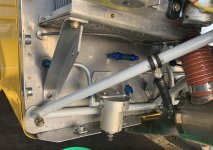I have one on my -4 per plans and Bingelis book recommendation when built in Jurassic era. I have a small hole in my lower cowl that I can sump through with a standard drain tool. A few years back I witnessed a return to field deadstick Glassair that was just pure luck...He had not owned it for long, and it sat on our ramp around Xmas time while he visited family and it rained a couple times. Had the whole family there for his departure home to Fla. Did a non eventful runup, took off and did high speed zoom climb at steep angle and at 500-800 feet, backfire pop and silent, managed the dreaded turnback but was so fast he had to force on runway , overshoot and destroyed the plane. We pulled the cowl and the hidden, inaccessible gascolator was full of water to the top. Im sure the zoom climb force fed water that was there for a while. Gave me a new respect for sumping mine. My -4 is always hangared,and in 12 years, I have never got a drop of water out of it, and yes, I have do it with the boost pump on.





